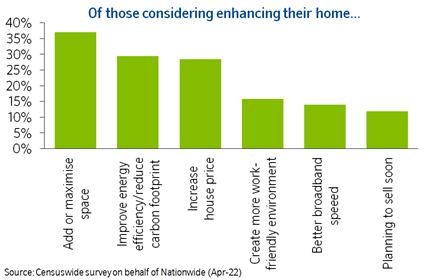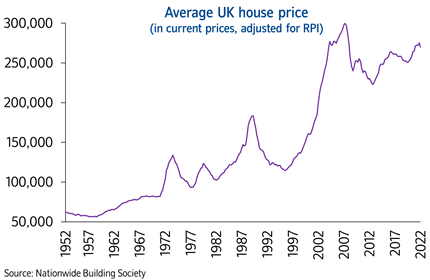|
Headlines |
May-22 |
Apr-22 |
|
Monthly Index* |
536.3 |
531.8 |
|
Monthly Change* |
0.9% |
0.4% |
|
Annual Change |
11.2% |
12.1% |
|
Average Price (not seasonally adjusted) |
£269,914 |
£267,620 |
* Seasonally adjusted figure (note that monthly % changes are revised when seasonal adjustment factors are re-estimated)
Commenting on the figures, Robert Gardner, Nationwide's Chief Economist, said:
“May saw a slight slowing in the rate of annual house price growth to 11.2%, from 12.1% in April. Prices rose by 0.9% month-on-month, after taking account of seasonal effects – the tenth successive monthly increase, which kept annual price growth in double digits.
“Despite growing headwinds from the squeeze on household budgets due to high inflation and a steady increase in borrowing costs, the housing market has retained a surprising amount of momentum. Demand is being supported by strong labour market conditions, where the unemployment rate has fallen towards 50-year lows, and with the number of job vacancies at a record high. At the same time, the stock of homes on the market has remained low, keeping upward pressure on house prices.
“We continue to expect the housing market to slow as the year progresses. Household finances are likely to remain under pressure with inflation set to reach double digits in the coming quarters if global energy prices remain high. Measures of consumer confidence have already fallen towards record lows. Moreover, the Bank of England is widely expected to raise interest rates further, which will also exert a cooling impact on the market if this feeds through to mortgage rates.
Home improvement
“Our recent housing market survey[1] revealed that, as well as more people looking to move, over half of those surveyed (54%) are considering enhancing their home.
“The most popular option for those looking to make improvements was to add or maximise space, with more than a third (37%) citing this as a motivating factor. Interestingly, 29% of those surveyed wanted to improve energy efficiency or reduce the carbon footprint of their home. This consideration has become increasingly relevant in light of surging energy costs, though decarbonising and adapting the housing stock is also important if the UK is to meet its 2050 emissions target.
House prices since 1952
“2022 marks the Queen’s Platinum Jubilee and it is also 70 years since we produced our first house price data. The housing market was very different back in 1952, with just 32% of households owning their own home, compared to 65% today.
“The UK average house price in 1952 was £1,891 - which is around £62,000 in today’s money. This means that current average house prices are 4.3 times higher than 1952 levels in real terms (adjusting for retail price inflation).
“In 1952 the typical house cost four times average annual earnings, but today the average home costs 6.9 times earnings - a record high. However, borrowing costs were higher back then, with Bank Rate at 4.0%, compared to 1.0% currently.
“In the early 1950s, almost all mortgages were advanced by building societies, where the overwhelming majority were small, locally-based lenders. In 1952, there were 800 societies operating in the UK, compared to 43 today.”







